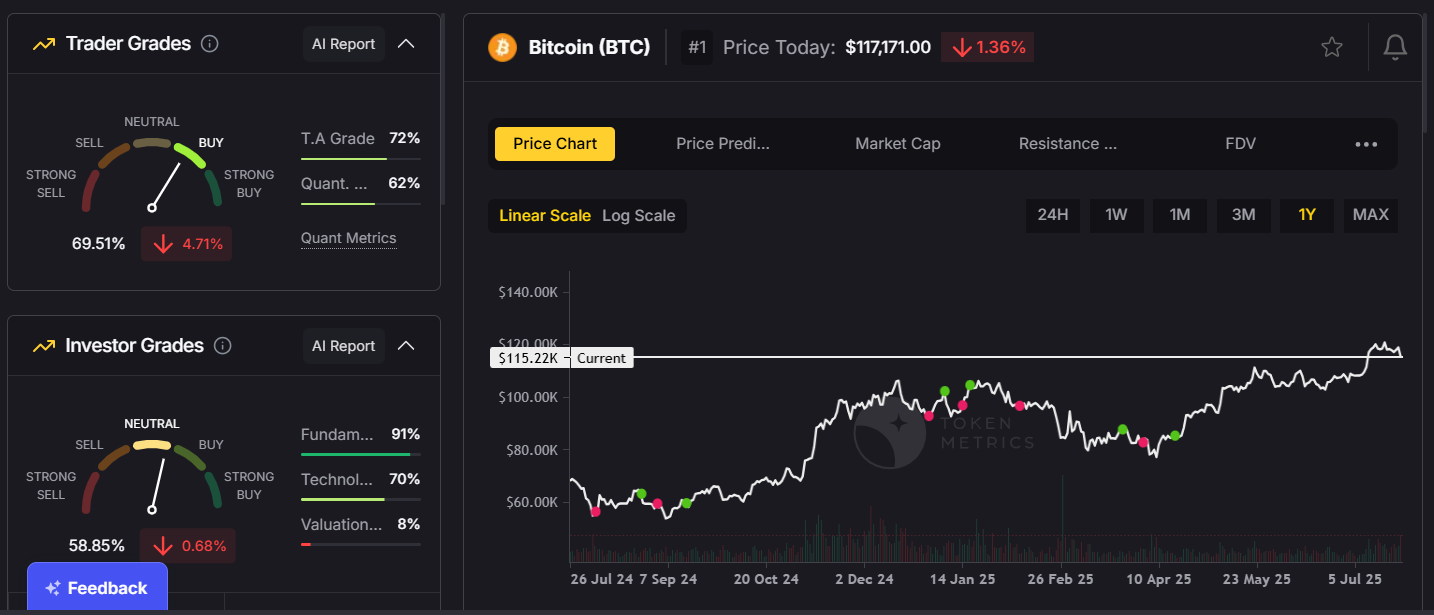Are There Crypto Indices for DeFi, AI, and Other Sectors? Exploring Thematic Index Investing in 2025

In the fast-moving world of crypto, one of the smartest ways to invest in 2025 is by aligning your portfolio with emerging narratives. Whether it’s DeFi, AI, Memecoins, or Real World Assets (RWAs), crypto’s growth is fueled by themes—and the easiest way to capitalize on them is through sector-based crypto indices.
But are there crypto indices tailored to specific sectors?
Absolutely. In fact, thematic crypto indices are one of the hottest trends in index-based investing right now.
This article explores the most popular sector-based crypto indices in 2025, how they work, and how you can use them to build a diversified, trend-aligned portfolio.
What Is a Thematic or Sector-Based Crypto Index?
A sector-based crypto index is a basket of cryptocurrencies selected based on a specific theme or market narrative. Instead of tracking the overall market, these indices focus on high-growth areas such as:
- Decentralized Finance (DeFi)
- Artificial Intelligence (AI) Tokens
- Memecoins
- Real World Assets (RWA)
- Layer 1 Blockchains
- Gaming / Metaverse
Each index includes multiple tokens within that category, allowing investors to gain exposure to the entire theme without picking individual winners.
Why Sector Indices Matter in 2025
In today’s market, performance is narrative-driven. A single meme can send a coin flying, or a regulatory shift can pump RWAs. Sector indices help investors:
✅ Capitalize on trends early
✅ Avoid single-token risk
✅ Ride sector momentum without constant research
✅ Balance exposure across tokens within a theme
Instead of trying to guess which AI token will win, you can hold the AI Index and benefit from the entire trend.
Top Sector-Based Crypto Indices in 2025
Here are the most popular and best-performing thematic indices this year:
1. Token Metrics AI Tokens Index
Focus: Artificial Intelligence & Agent Economy
Constituents: FET, AGIX, GRT, TAO, NUM, OCEAN
Management: AI-powered with weekly rebalancing
Why It’s Hot:
AI is dominating tech and crypto alike. This index tracks high-conviction AI tokens and rotates into bullish ones each week. Its performance outpaced most passive indices during Q1 2025.
2. Token Metrics DeFi Index
Focus: Core DeFi protocols
Constituents: AAVE, LDO, UNI, RUNE, DYDX, GMX
Management: AI-managed, rebalanced weekly
Why It’s Hot:
DeFi is crypto’s infrastructure. This index rotates into projects showing strength in TVL, volume, and sentiment—giving you DeFi exposure without the need to manage protocol risk manually.
3. Token Metrics Memecoin Index
Focus: Viral meme tokens
Constituents: DOGE, SHIB, PEPE, WIF, BONK, FLOKI
Management: AI-powered signals and weekly adjustments
Why It’s Hot:
This index tracks social momentum and market sentiment, allowing traders to ride the waves while mitigating downside through AI-powered exits.
4. Token Metrics RWA Index
Focus: Real World Asset tokens
Constituents: MKR, ONDO, POLYX, XDC, CFG
Management: Thematic + risk-adjusted AI overlay
Why It’s Hot:
The RWA narrative is exploding as institutions tokenize bonds, treasuries, and assets. This index includes top-performing RWA projects with liquidity and regulatory traction.
5. Token Metrics Layer 1 Index
Focus: Smart contract platforms
Constituents: ETH, SOL, AVAX, NEAR, SUI, TON
Management: Passive or AI-optimized version
Why It’s Hot:
The infrastructure battle among Layer 1s continues. This index provides broad exposure to the platforms that power most of Web3.
6. Index Coop DPI (DeFi Pulse Index)
Focus: Leading Ethereum DeFi protocols
Constituents: AAVE, UNI, COMP, SNX, LRC
Management: DAO-governed, passive rebalance
Why It’s Hot:
DPI is the OG DeFi index—trusted, decentralized, and consistently rebalanced on-chain.
7. Phuture Custom Indices
Focus: User-created strategies
Constituents: Fully customizable
Management: On-chain rules, community-driven
Why It’s Hot:
Create your own sector index or invest in curated strategies. Fully composable within DeFi.
How to Choose the Right Sector Index
Choosing the best sector-based index depends on your goals and your belief in specific narratives.

AI vs. Passive Sector Indices
Many sector indices today are AI-powered, meaning they adjust weights and tokens dynamically based on real-time data. This is especially useful in volatile or hype-driven narratives (like Memecoins or AI tokens).

Where to Invest in Sector-Based Indices
Here’s where to find and invest in thematic indices:
- ✅ Token Metrics – Sector-specific AI indices with weekly signals
- ✅ Index Coop – Ethereum-based DeFi indices with DAO governance
- ✅ Phuture – On-chain, user-customized index strategies
- ✅ Set Protocol – Technical and trend-driven portfolios
- ✅ Centralized Brokers – Limited thematic access (e.g., Bitwise)
You can access these using fiat, stablecoins, or crypto wallets depending on the platform.
Final Thoughts: Sector Indices Help You Invest in What Matters
In 2025, the biggest opportunities in crypto are often found in narrative-driven sectors. Whether it’s AI, DeFi, Memecoins, or tokenized real-world assets, sector-based crypto indices offer:
- Smart diversification
- Aligned exposure to growing trends
- Hands-free portfolio management
- Reduced risk of picking the wrong token
For the best results, explore platforms like Token Metrics, where AI-enhanced sector indices help you adapt to the market and capitalize on breakout themes with data-backed precision.
Create Your Free Token Metrics Account

.png)




%201.svg)
%201.svg)


%201.svg)





_%20A%20Complete%20Guide%20to%20the%20Meme%20Coin%20in%202025.png)

_%20A%20Complete%20Guide%20to%20Ethereum%E2%80%99s%20Native%20Token%20in%202025.png)






.svg)




.png)